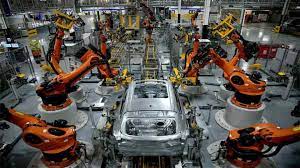WASHINGTON (Reuters): African countries are less likely to follow East Asia’s development model of expanding manufacturing to pull people out of poverty, according to a study that shows a declining share of factory jobs for most countries by mid-century.
The new paper released on Monday by the Center for Global Development shows there will be fewer factory workers in 2050 globally than there are now, and that even in poor countries with abundant cheap labor, manufacturing job growth will stagnate.
China may be an exception, further expanding its share of manufacturing output among 59 countries modelled in the study to 43.8 per cent in 2050 from 30pc in 2018 and 10.5pc in 1975.
The study’s authors say that China will continue to dominate global manufacturing, moving into higher-value segments.
While this may create some space for other developing countries in Africa, Southeast Asia and Latin America to move into lower-end manufacturing in low-end sectors abandoned by China, it won’t be enough to replicate the transformative East Asian development model of moving from agriculture to manufacturing.
Instead, CGD senior fellows Charles Kenny and Ranil Dissanayake say that many countries will move straight from agriculture to services, where jobs will expand rapidly, especially because of new technologies – even in countries such as Bangladesh and Ethiopia.
“There’s still a popular idea that low-income countries will progress naturally from being dominated by agriculture to manufacturing-led growth, but mounting evidence suggests that’s not going to happen,” said Kenny. “We think that farms are going to empty out across Africa and Asia in the coming decades, but people are likely to flood into offices and shops, not factories.”
The study projects global growth through the year 2050 and models changes in the economies of 59 countries accounting for about three quarters of the world’s GDP and population.
It projects that even for the lowest-income countries, the number of factory jobs will barely keep pace with population growth over the next 30 years, and manufacturing is likely to remain a small part of most of these countries’ economies.
Across all low-income countries, manufacturing jobs are projected to hold steady at below 8pc of total employment, the study finds. It projects the share of manufacturing jobs in high-income countries will continue to fall, to 8.3pc by 2050 from 11.4pc currently.
It said that private service sector jobs will make up roughly 37pc of global jobs by 2050, and 26pc in today’s low-income countries, up from about 12pc currently.







